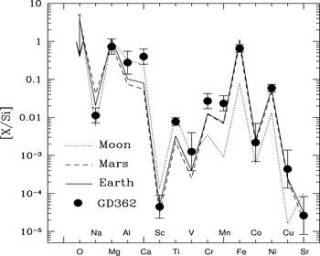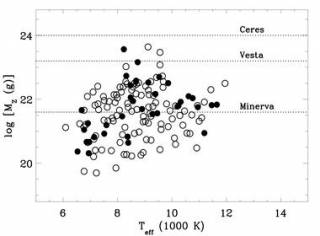One of the most basic questions that scientists can ask about rocky and potentially Earth-like exoplanets is “What is their chemical composition?”
Small, solid exoplanet detection has become a scientific reality with state of the art facilities such as the Kepler mission, yet the empirical characterisation of these most intriguing planets is extremely challenging. Transit plus radial velocity information can yield planet mass and radius, and hence planet density, but the bulk composition remains degenerate and model−dependent.
Fortunately, as demonstrated by the Spitzer Space Telescope and complementary ground−based observations, debris−polluted white dwarfs can yield accurate information on the chemical structure of rocky minor planets (i.e. extrasolar asteroids); these are the building blocks of terrestrial exoplanets. The white dwarf distills the planetary fragments, and provides powerful insight into the mass and chemical structure of the parent body.
Heavy elements sink rapidly from the outer layers of cool white dwarfs due to their high surface gravities, resulting in pure hydrogen (or helium) atmospheres. However, those stars with planetary system remnants can become contaminated by small, but spectroscopically detectable, amounts of metal-rich material as have been observed (but not understood) for decades. In recent years, infrared observations have firmly linked these atmospheric metals to tidally destroyed planetary bodies analogous to the asteroids of the Solar System. At least one such system exhibits deep and irregular transiting events, strongly confirming the presence of a planetary system.


Image: The abundance of many metals detected in asteroid-polluted white dwarf GD 362. The relative pattern of heavy elements is best matched by a combination of the Earth and Moon, demonstrating the debris is refractory-rich, volatile-poor, and terrestrial in nature.

UCL is one of the few places in the world where this research is being led, and there are currently opportunities to study exo-terrestrial planetary system composition, frequency and architecture.
 Close
Close

